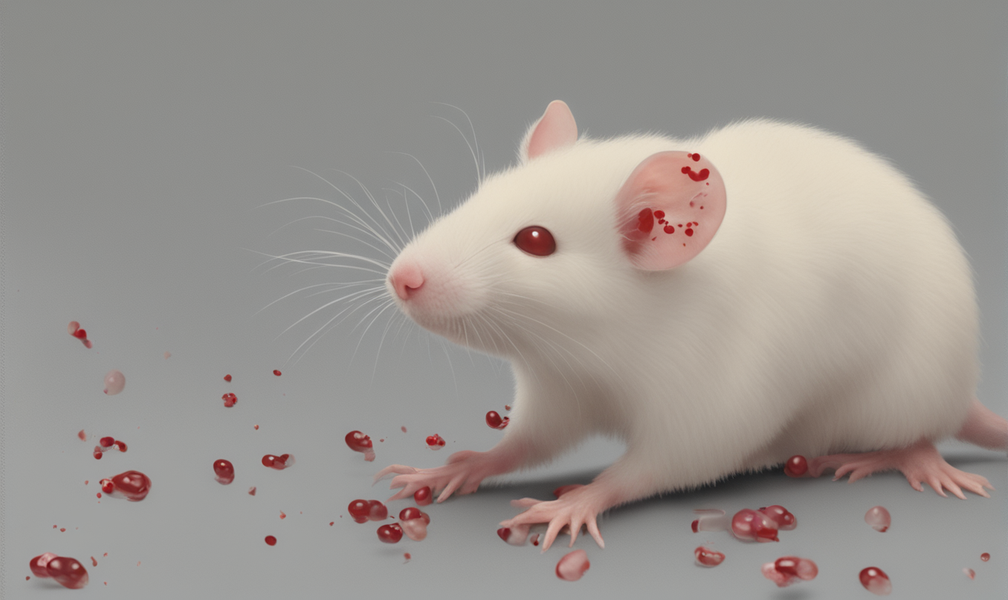Heparin Antidote Molecules Reduced Bleeding in Mice

Researchers at the Spanish National Research Council (CSIC) Institute for Advanced Chemistry of Catalonia (IQAC-CSIC) have made significant strides in the development of molecules that can counteract the effects of heparin, a commonly used anticoagulant.
Their work, published in the Journal of Medicinal Chemistry, has led to the discovery of promising antidote molecules, 3FF and 3AC, which have shown efficacy in both in vitro and in vivo tests with mice. This breakthrough is essential for addressing potential complications associated with heparin use, such as overdose, life-threatening bleeding, and high-risk surgeries.
Heparin’s Versatile Role and the Need for Reversal Agents
Heparin is a widely utilized anticoagulant, renowned for its versatile applications in medicine, including its use as an antiviral and anticancer agent. Its importance has been underscored by its recent use in preventing blood clots in coronavirus patients and aiding pregnant women.
However, the therapeutic benefits of heparin come with inherent risks. In cases of overdose or situations where uncontrolled bleeding could be life-threatening, having efficient heparin reversal agents is imperative.
Dr. Ignacio Alfonso, along with Dr. Daniel Carbajo and their research colleagues, emphasizes the necessity for a diverse range of antidotes to address these challenges.
They acknowledge that while heparin is one of the most commonly used anticoagulants, it is not without its dangers. Allergic reactions, overdose, and the potential for significant bruising or uncontrolled bleeding can occur.
This is especially critical for patients under heparin treatment who require urgent or unexpected surgical interventions, such as those resulting from severe trauma or cardiovascular accidents.
In such cases, inhibiting the effects of circulating heparin in the bloodstream is paramount to prevent complications.
Currently, protamine sulfate serves as the primary antidote to neutralize the action of heparin.
However, it has limitations, primarily due to its high molecular weight. Researchers recognize the need for alternative, smaller molecules capable of reversing heparin’s anticoagulation effects.
While this pursuit has been a hot topic in contemporary research, no small molecule on the market effectively inhibits the anticoagulant effect of heparin.
The physicochemical properties of heparin, as an anionic polysaccharide, make the search for suitable antidotes based on small synthetic molecules a challenging endeavor.
Dynamic Combinatorial Chemistry: A Promising Approach
In a 2018 publication in Angewandte Chemie International Edition, the researchers introduced their innovative approach to addressing this challenge.
They utilized dynamic combinatorial chemistry (DCC) systems to identify a simple molecule capable of inhibiting heparin’s effects in vitro.
This methodology streamlines the selection, identification, and preparation of molecules for specific applications, expediting the development of functional compounds.
Notably, DCC doesn’t necessitate intricate knowledge of the target molecule’s structural characteristics; instead, it enables the target itself to select and amplify the most efficient binders from a dynamic combinatorial library (DCL) of potential ligands.
Heparin, with its limited structural information and molecular heterogeneity, emerged as an ideal candidate for DCC.
This approach doesn’t depend on a deep understanding of the target’s structure, making it particularly suited for tackling complex molecules like heparin.
Building on their previous work, Alfonso and his team extended the DCC approach to conduct a broader screening. This endeavor led to the discovery of new molecules with greater potential as heparin antidotes.
In their latest research, the team expanded the molecular diversity of the dynamic library, creating a broader molecular recognition space. This enriched library better encompasses the structural basis for efficient heparin recognition and identifies more potent binders with potential applications as drugs.
Moreover, the expanded structural diversity allows for the validation of the dynamic combinatorial chemistry approach by correlating the response in the dynamic covalent screening with activity in blood coagulation.
Promising Antidote Compounds and In Vivo Efficacy
The new study successfully identified promising heparin antidote compounds. Dr. Alfonso remarked on the excellent correlation between screening results and heparin inhibition observed in in vitro enzymatic assays. From the resulting compounds, two—designated 3FF and 3AC—showed significantly better in vitro activities than those obtained in the 2018 research.
These promising molecules were subsequently tested in vivo, yielding excellent results. Both 3FF and 3AC demonstrated their efficiency as antidotes for heparin, substantially reducing bleeding in heparinized mice.
In conclusion, Dr. Alfonso stated that this study represents a definitive validation of their approach. The reported results underscore the power of dynamic combinatorial chemistry in targeting complex and elusive biopolymers like heparin.
This approach is deemed “extremely convenient” as a screening protocol for identifying strong binders for elusive biomacromolecules. It holds great promise in the discovery of new drug candidates, particularly in situations where conventional approaches have faced significant challenges.
The research conducted by Dr. Alfonso, Dr. Carbajo, and their colleagues offers a hopeful glimpse into the future of heparin reversal agents, addressing critical needs in medical practice and ensuring the safety of patients receiving heparin treatment.
